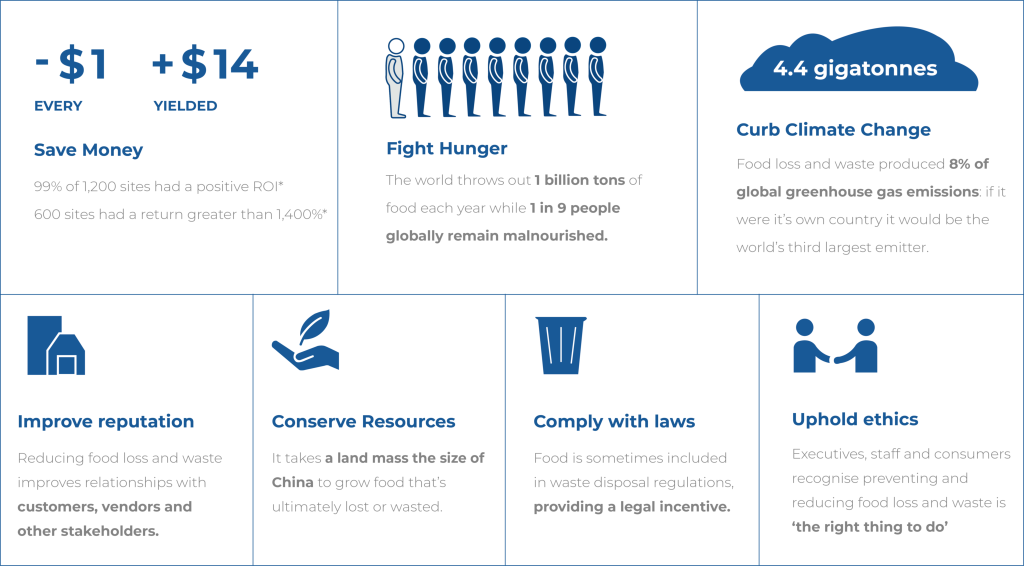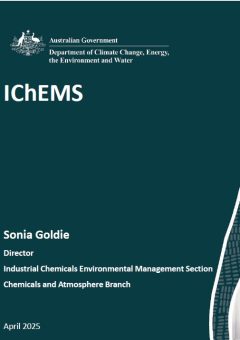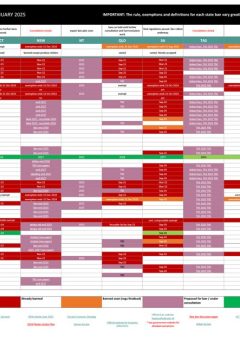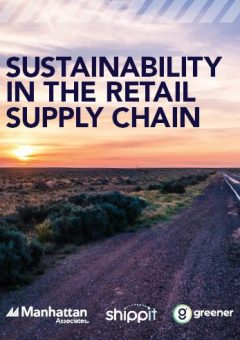Latest Sustainability News
National Food Waste Strategy
Australia has set a goal to halve its food waste by 2030, aligning with the UN’s Sustainable Development Goal 12.3.
Food waste has significant economic and environmental impacts, created along the whole supply chain from food that never leaves the farm, food that is lost during transport, or food that is wasted from the hospitality sector, or food we throw out at home.
- One third of the world’s food is wasted.
- Food waste produces 8% of global greenhouse gas emissions.
- Wasting food is worse than total emissions from flying (1.9%), plastic production (3.8%) and oil extraction (3.8%) – OzHarvest
- If food waste was a country it would be the third largest greenhouse gas emitter, behind the USA and China.
- 25% of water used in agriculture is used to grow food that is ultimately wasted – throwing away one burger wastes the same amount of water as a 90 minute shower.
Food waste is also a major problem in Australia.
- Food waste costs the economy around $36.6 billion each year.
- Each year we waste around 7.6 million tonnes of food across the supply and consumption chain – that’s about $2,000 to $2,500 per household per year.
- Australia uses around 2600 gigalitres of water to grow food that is wasted – this equates to the volume of water in five Sydney Harbours.
But for every $1 invested in reducing food waste, up to $14 can be yielded – so if we take action now, we can save waste and money.
-
National Food Waste Strategy
Australia has set a goal to halve its food waste by 2030, aligning with the UN’s Sustainable Development Goal 12.3.
Food waste, whether it be food that never leaves the farm, food that is lost during transport, or food that is wasted from the hospitality sector and households, has significant economic and environmental impacts:
- One third of the world’s food is wasted.
- 25% of water used in agriculture is used to grow food that is ultimately wasted – throwing away one burger wastes the same amount of water as a 90 minute shower.
- Food waste produces eight per cent of global greenhouse gas emissions.
- If food waste was a country, it would be the third largest greenhouse gas emitter, behind the USA and China.
Food waste is also a major problem in Australia.
The National Food Waste Strategy Feasibility Study produced by Food Innovation Australia Limited reported that:
- Food waste costs the economy around $36.6 billion each year.
- Each year we waste around 7.6 million tonnes of food across the supply and consumption chain – this wastage equals about 312kg per person, equivalent to around one in five bags of groceries or $2,000 to $2,500 per household per year.
- Food waste accounts for approximately 3% of Australia’s annual greenhouse gas emissions.
- Australia uses around 2600 gigalitres of water to grow food that is wasted – this equates to the volume of water in five Sydney Harbours.
- The amount of land used to grow wasted food covers in excess of 25 million hectares, a landmass larger than the state of Victoria.
National Food Waste Strategy
Australia has set a goal to halve its food waste by 2030, aligning with the UN’s Sustainable Development Goal 12.3.
Actions to be undertaken to reduce food waste are laid out in the National Food Waste Strategy, Roadmap and the National Waste Policy Action Plan.
Some of these actions include:
- Establishing Stop Food Waste Australia to support the National Food Waste Strategy
- A $4 million investment to establish Stop Food Waste Australia, which will implement the Australian Food Pact, sector actions plans, and other initiatives to reduce food waste across the supply chain.
- Developing the Australian Food Pact voluntary agreement for industry
- The Australian Food Pact brings together organisations from all parts of the food chain to identify solutions to reduce food waste and increase productivity
- Diverting more food to the food rescue sector
- Redistributing food that would otherwise be wasted will help feed the more than one in five Australians who do not have adequate access to food
- Support for education campaigns
- Increasing public awareness about the scale of the food waste problem and its negative impacts is an important part of reducing food waste, particularly in households
- Research and technological improvements
- Investment in agricultural efficiency and innovation, waste treatment infrastructure, and ways to create value from food waste will reduce the amount of food waste ending up in landfill
-
Stop Food Waste Australia
Stop Food Waste Australia is a powerful partnership of organisations who operate along the farm-to-fork food supply chain that are committed to reducing Australia’s food waste by half by 2030.
As part of implementing the National Food Waste Strategy, Australia launched its roadmap to reduce food waste in 2020. Food Innovation Australia Ltd developed this roadmap to provide a clear path forward to halve food waste in Australia by 2030. The roadmap documents the main steps and initiatives required and recognises governments and private sectors significant contributions. The establishment of Stop Food Waste Australia is a key step in the delivery of this roadmap.
By reducing food loss and waste we can:
- Make the best use of precious natural resources, making sure more food makes it to a table.
- Create new jobs, products and ingredients and grow our agri-food sector.
- Reduce the climate impacts of our food system and make it more resilient to climate risks.
- Support farmers, businesses and households doing it tough.

-
The Australian Food Pact
National Food Waste Strategy
Australia has set a goal to halve its food waste by 2030, aligning with the UN’s Sustainable Development Goal 12.3.
Food waste, whether it be food that never leaves the farm, food that is lost during transport, or food that is wasted from the hospitality sector and households, has significant economic and environmental impacts:
- One third of the world’s food is wasted.
- 25% of water used in agriculture is used to grow food that is ultimately wasted – throwing away one burger wastes the same amount of water as a 90 minute shower.
- Food waste produces eight per cent of global greenhouse gas emissions. If food waste was a country it would be the third largest greenhouse gas emitter, behind the USA and China.
Food waste is also a major problem in Australia. The National Food Waste Strategy Feasibility Study produced by Food Innovation Australia Limited reported that:
- Food waste costs the economy around $36.6 billion each year.
- Each year we waste around 7.6 million tonnes of food across the supply and consumption chain – this wastage equals about 312kg per person, equivalent to around one in five bags of groceries or $2,000 to $2,500 per household per year.
- Food waste accounts for approximately 3% of Australia’s annual greenhouse gas emissions.
- Australia uses around 2600 gigalitres of water to grow food that is wasted – this equates to the volume of water in five Sydney Harbours.
- The amount of land used to grow wasted food covers in excess of 25 million hectares, a landmass larger than the state of Victoria.
Australian Government on food waste >
Stop Food Waste Australia
Stop Food Waste Australia is a powerful partnership of organisations who operate along the farm-to-fork food supply chain that are committed to reducing Australia’s food waste by half by 2030.
As part of implementing the National Food Waste Strategy, Australia launched its roadmap to reduce food waste in 2020. Food Innovation Australia Ltd developed this roadmap to provide a clear path forward to halve food waste in Australia by 2030. The roadmap documents the main steps and initiatives required and recognises governments and private sectors significant contributions. The establishment of Stop Food Waste Australia is a key step in the delivery of this roadmap.
By reducing food loss and waste we can:
- Make the best use of precious natural resources, making sure more food makes it to a table.
- Create new jobs, products and ingredients and grow our agri-food sector.
- Reduce the climate impacts of our food system and make it more resilient to climate risks.
- Support farmers, businesses and households doing it tough.

What we do
The National Retail Association Policy Team exists to help retail businesses succeed and grow within an ever-changing regulatory environment.
Our team works with a wide range of industry stakeholders – retailers, government, law enforcement, regulatory bodies, shopping centres, community groups, supporting associations and many more – to develop industry-wide policy platforms or positions on issues of importance to the Australian retail sector.
We work with all retailers across the retail and foodservice industry – regardless of size, category or business model – from the largest department chains to family-run pizza shops. Similar issues affect all retailers every day – such as retail crime, product safety and environmental legislation – and we all benefit from sharing intelligence and real-world experience.
We work actively with governments at international, federal, state and local levels to ensure the interests and needs of the Australian retail and services sectors are protected and promoted. Rather than running from inevitable regulatory change, we provide a bridge between retailers and government – facilitating the exchange of ideas and information which ultimately leads to more informed, commercially-aware outcomes for all parties.
We place real-world insight above all else, so we actively engage with retailers in stores, strip precincts and shopping centres.
We tackle the issues you can’t tackle alone.




